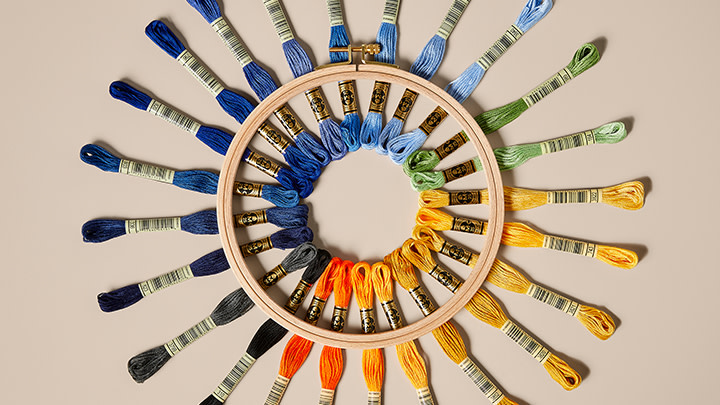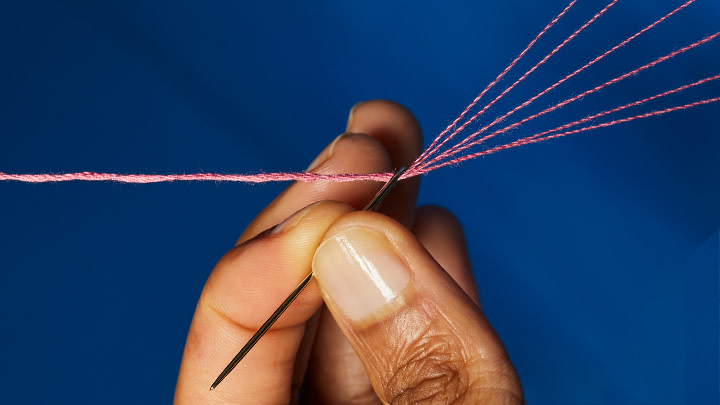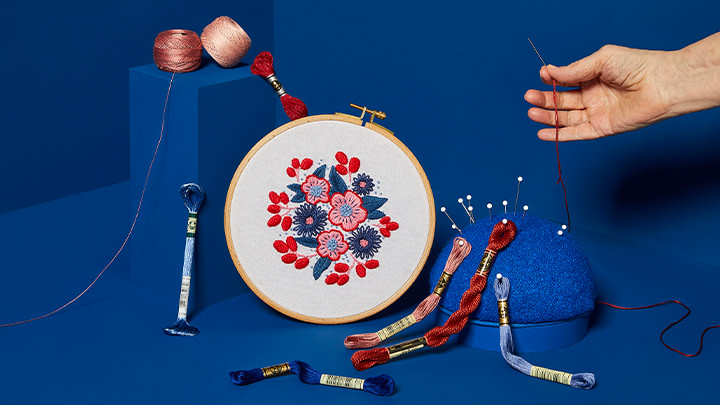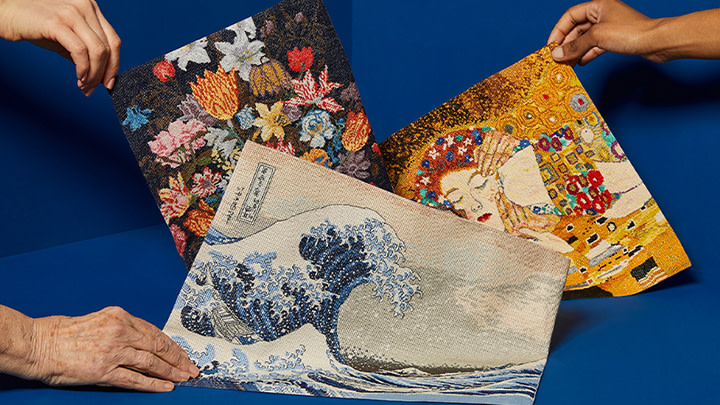Whether you are doing cross stitch or embroidery, knotting your thread is not generally recommended because it creates bumps on the fabric. The exception is when stitching on pre-finished items such as clothing and homewares that will endure repeated wear and washing. In this instance, to make sure that the stitches remain secure, use a small knot at the starting and stopping points. To create beautiful “bump-free” embroidery, DMC recommends starting your stitching with one of these three methods:
The Waste Knot or Holding Stitch
This starting technique is best when you begin a new design or new area of stitching.
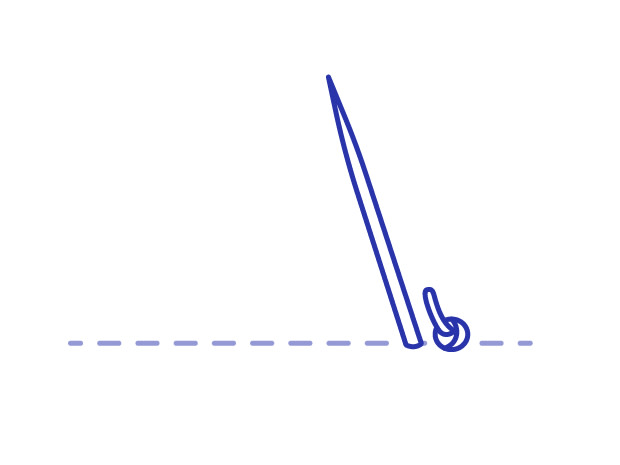
Knot the end of your thread and take your needle from the front to the back about 2.5cm (1”) from your starting point in an area that will be covered by your stitching.

Bring the needle up through the fabric, close to the knot and make two tiny holding stitches.
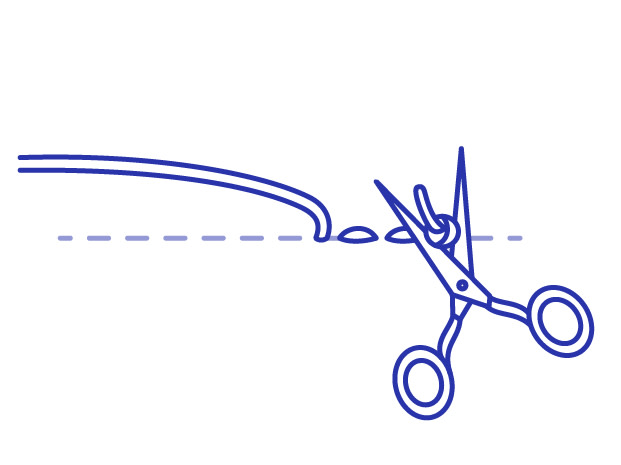
Bring your needle up where you are going to begin and start stitching. Snip off the waste knot as close to the fabric as you can.

Knot the end of your thread and take your needle from the front to the back about 2.5cm (1”) from your starting point in an area that will be covered by your stitching.

Bring the needle up through the fabric, close to the knot and make two tiny holding stitches.

Bring your needle up where you are going to begin and start stitching. Snip off the waste knot as close to the fabric as you can.
The Away Knot Method
Another easy technique when you begin a new design or new area of stitching is the away knot.
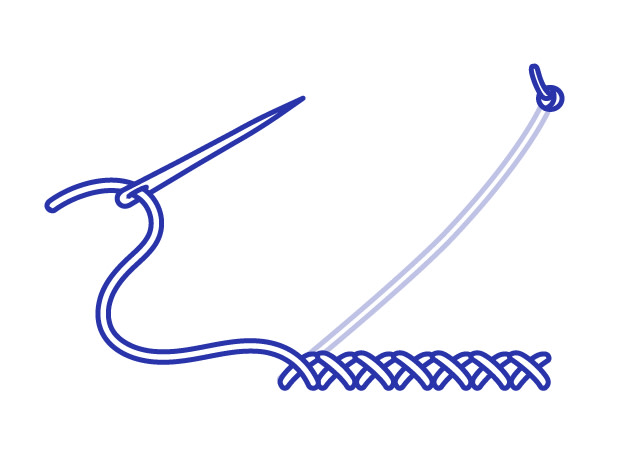
Knot the end of your thread and take your needle from the front to the back about 10cm (4”) from your starting point and begin stitching. (Note: If a needle hole will show in the fabric place the away knot in an area of fabric that will be covered by stitching).
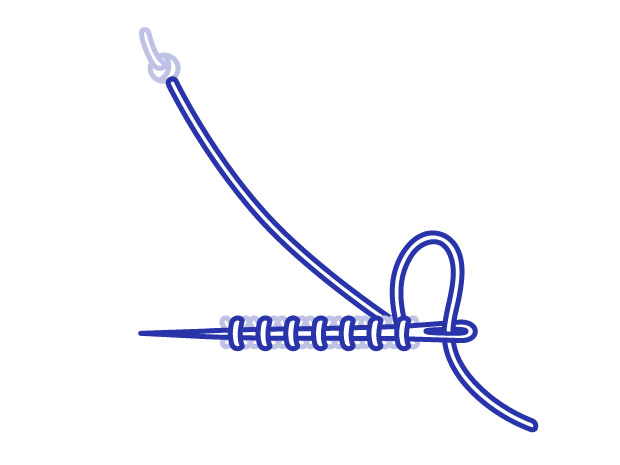
Finish stitching with that thread by taking your needle to the back of your work and secure the thread by weaving it under a few of the stitches you’ve made.
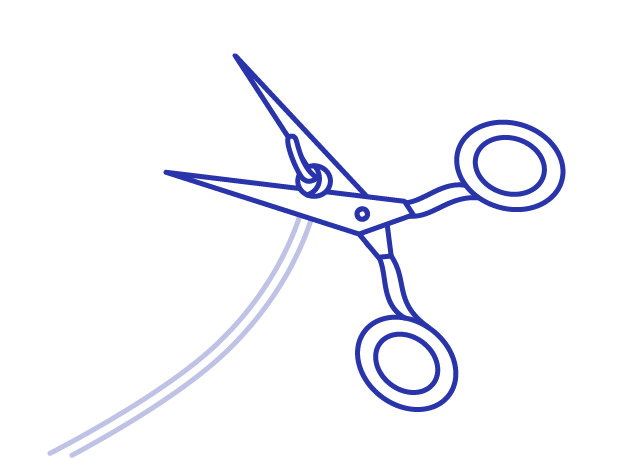
Flip your work over and snip the away knot off from the front of your work as close to the fabric as you can. Turn your work over, re-thread the needle with the tail of the thread and weave it through several stitches on the back to secure it.

Knot the end of your thread and take your needle from the front to the back about 10cm (4”) from your starting point and begin stitching. (Note: If a needle hole will show in the fabric place the away knot in an area of fabric that will be covered by stitching).

Finish stitching with that thread by taking your needle to the back of your work and secure the thread by weaving it under a few of the stitches you’ve made.

Flip your work over and snip the away knot off from the front of your work as close to the fabric as you can. Turn your work over, re-thread the needle with the tail of the thread and weave it through several stitches on the back to secure it.
The Stitching Over Method
This method works well for tapestry, needlepoint and cross stitch.
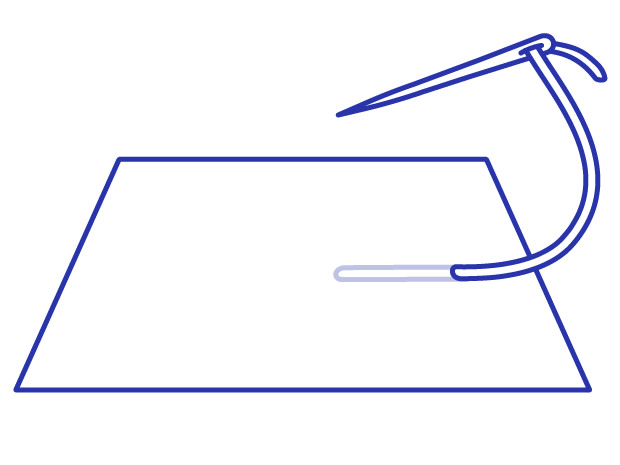
Pull your threaded needle up onto the front side of the fabric, leaving a 2.5cm (1”) tail of thread at the back.
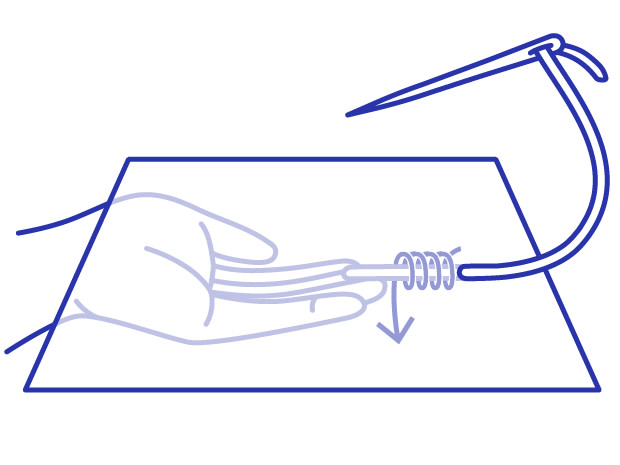
Hold the tail end of thread against the back of the fabric in the direction you plan to stitch and work the first 4 to 5 stitches over it to secure it into place.
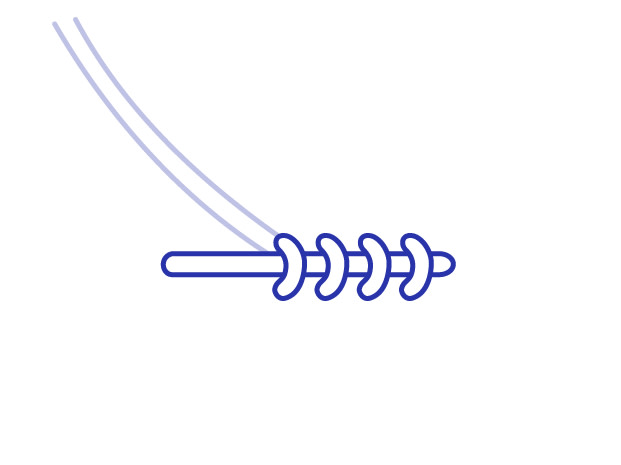
Be sure to check the back of your work to ensure that stitches are covering the thread and clip any loose ends before continuing to stitch. Once you have started a project, you can secure new threads by weaving the thread under several adjacent stitches on the back. Continue stitching.

Pull your threaded needle up onto the front side of the fabric, leaving a 2.5cm (1”) tail of thread at the back.

Hold the tail end of thread against the back of the fabric in the direction you plan to stitch and work the first 4 to 5 stitches over it to secure it into place.

Be sure to check the back of your work to ensure that stitches are covering the thread and clip any loose ends before continuing to stitch. Once you have started a project, you can secure new threads by weaving the thread under several adjacent stitches on the back. Continue stitching.
Stopping a Section, Thread or Changing Color
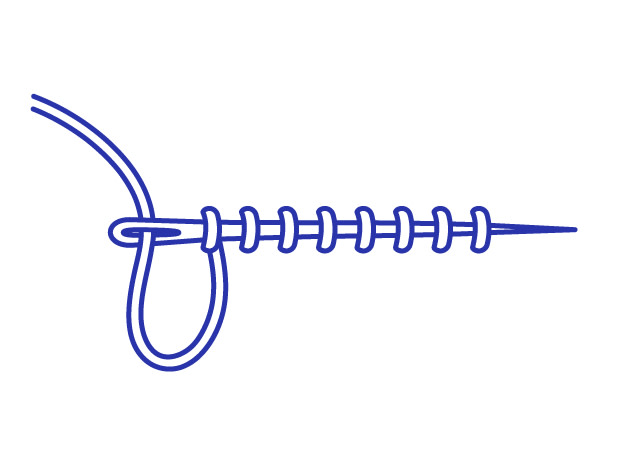
To stop stitching with a thread, because it is too short, you have finished a section or want to use another color, take your threaded needle to the back of your work and weave it under the last few stitches on the back of the fabric to secure it. Then snip off the excess thread.

To stop stitching with a thread, because it is too short, you have finished a section or want to use another color, take your threaded needle to the back of your work and weave it under the last few stitches on the back of the fabric to secure it. Then snip off the excess thread.

